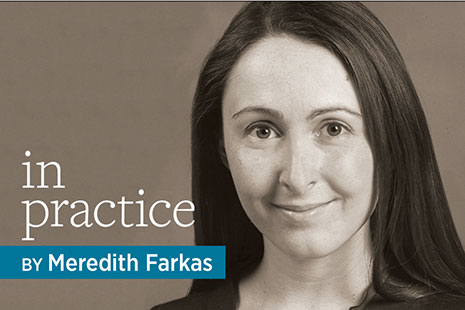
Libraries work hard to help the underserved in their communities. However, identifying and reaching out to nonusers of our services is often difficult. Imagine having access to information about every one of your community members and whether and how they use the library. You could tailor your communications and target those who might need services the most.
In K–12 and academic libraries, this is becoming increasingly possible with learning analytics systems that aggregate student data to make trends visible. The systems also allow advisors, instructors, and other stakeholders to use the trend data to identify a student at risk based on specific characteristics or behaviors. They allow educators to intervene, often before a student exhibits any difficulties.
Some libraries have jumped on the learning analytics bandwagon, inspired by early work like the Association of College and Research Libraries’ Value of Academic Libraries report and the Jisc Library Impact Data Project. To demonstrate the value of libraries, some institutions are integrating library data—such as circulation data, building visits, database usage, and workshop attendance—into institutional learning analytics platforms.
While the possibilities of library data in learning analytics might be intriguing, the privacy implications are immense. If these systems can identify students who don’t use the library, this means that individual and transaction-level data is being kept and put into other institutional platforms. It’s possible that a library collecting this data could end up responsible for a major breach of patron privacy.
I wonder if students know what data their library is or isn’t collecting. How many libraries require students to explicitly opt into data collection? Or do students tacitly agree to be tracked by using the library’s resources? Some claim that millennials don’t care about privacy, but preliminary research by Jenica Rogers, director of libraries at SUNY Potsdam, suggests that many students are concerned, especially when their information is not fully anonymized and aggregated.
While the possibilities of library data in learning analytics might be intriguing, the privacy implications are immense.
It’s not hard to imagine this data being used in ways we didn’t intend and can’t control. Instructors can already see student activity in the learning management system (LMS). What if they could also see how much time students are spending doing library research? It wouldn’t be a leap to imagine instructors grading students based on their use of library resources.
Although some libraries collect user data to demonstrate library value, so far the relationship between library use and student success has been shown to be only correlational. It is not clear that library use causes better grades. Correlates of student success include going to the gym, holding a part-time job, and living on campus. When it’s not clear whether the association is causal, there’s no guarantee that changing one behavior will improve a student’s grade.
At the 2016 Colorado Academic Library Association Conference, Megan Oakleaf, an associate professor at Syracuse (N.Y.) University School of Information Studies who favors using library data in learning analytics, stated, “We won’t know what difference the library makes until we collect data on individual library users.” However, in her presentation at that conference, Zoe Fisher, assistant professor and pedagogy and assessment librarian at University of Colorado Denver, described methods, such as ethnography and phenomenography, that libraries can use to investigate their value and better understand patrons without invading their privacy.
Compromising our professional values to chase a controversial education trend is definitely not our only option to understanding our impact on students.


